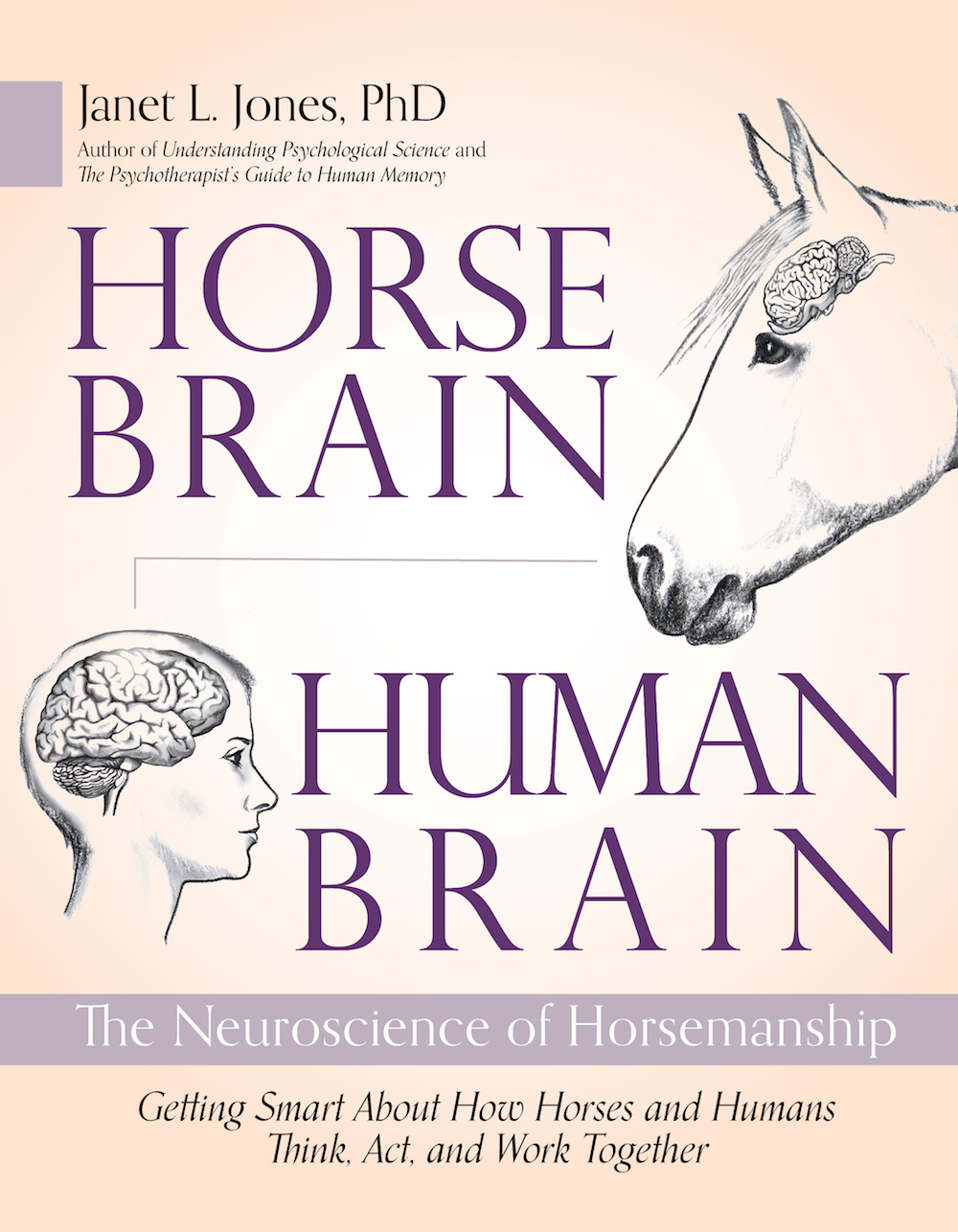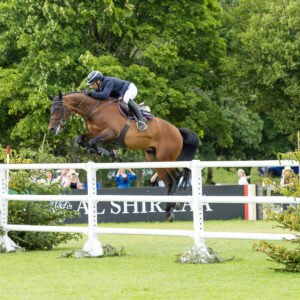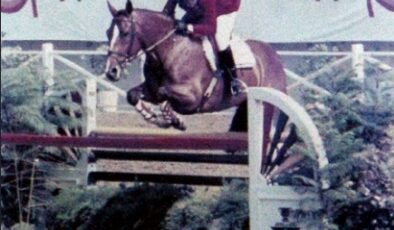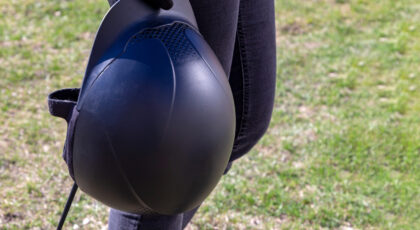Last week, I introduced the basics of teaching True to stand still and respect human spatial boundaries on a halter and lead. Once he understood those foundations, we moved on to the details.
True learned quickly to walk at a location just behind my right hand when it is extended parallel to my right shoulder. The correct position changes depending on discipline.
In natural horsemanship, horses are usually taught to remain well behind their human leaders, sometimes directly behind them. I avoid that because of the risk that a horse might shy forward and accidentally smack the handler in the back. Positioning the horse just behind but to the outside of your right shoulder blade is safer. (In other words, the horse will be behind your right hand, which is extended outward from your right shoulder.)
Eventing jogs occur with the handler running next to the horse’s left shoulder. Hunter jogs typically require handlers to remain next to the upper left portion of the horse’s neck.
Whatever your discipline is, teach your horse a consistent position.
True and I practice that position at halt, walk, trot, and reverse. The horse has to pay close attention to the handler—that’s one of the goals of groundwork—to see when her feet start and stop moving, which direction she is headed, and at what speed.
Yes, a horse can learn to detect all that just from your body language. The horse’s job is to remain with the handler at any speed, in whichever position she was taught.
Remember to hold your lead rope roughly 2 feet from the horse’s halter, but with a soft hand and slack in the rope. We touch the horse’s halter (by bumping the rope) only when correcting her position. The rest of the time, it is her job to position herself appropriately.
When I teach a horse to follow my silent body-language lead in remaining with me at various gaits, I begin at a walk, leading the horse. Halt quickly. The first time, the horse will probably wander out in front of his position, not realizing that you were going to stop. Bump him back into position with the halter.
After a few tries, True stops when I stop—no vocal commands or touches to the lead rope are needed. He is now paying attention to my body movements.
Next, we try that maneuver at a trot.
Trot forward, halt quickly. Back the horse into position with a few halter bumps if needed.
Some horses need encouragement to trot forward—if so, you might need a helper who can stand at a safe distance behind the horse and raise his arms or cluck to help the horse understand what is expected.
You can also have your horse observe an equine buddy who knows the ropes. Soon, the helper won’t be needed.
If you work alone, you can use a whip as an extension of your arm. It can be a longe whip, a dressage whip, a hollow slightly flexible tube, or the less flexible part of a “stick-and-string.” It doesn’t matter which—this tool is only used as an extension of your arm. It allows you to touch the horse’s hindquarters in places that your arm will not reach. It is never to be used to punish the horse or inflict pain.
With this method of encouraging a reluctant horse to move forward, hold the lead in your right hand while walking forward with the stick or whip in your left hand. When you begin to jog forward, your horse should begin to trot.
If he doesn’t, you continue jogging (almost in place if necessary) and looking forward, but you also move your left hand behind yourself with the whip and tap the horse’s left hip or hind leg. This should move him forward.
Every now and then, there’s a horse who just won’t comply. You know: the ones who almost stick out their tongues at your whip, root their feet into the dirt, and say “no way.”
In this case, I take a training step backward. (Training steps backward are the key to many problems and soon result in forward progress.)
Put Mister I-Don’t-Wanna in a round pen or on a longe line and teach him the verbal command to “trot.” You can use the position of your body, your arms, and the movement of a longe whip if necessary to associate the word “trot” with his transition into that gait. Praise when he responds correctly!
Work on this for a few days, until he immediately picks up a lively trot the moment you give the verbal command. At this point, you shouldn’t have to raise your arm or move the whip at all. Then try the groundwork trot again, adding your verbal command for the first few sessions.
Gradually remove the verbal command, and voila, you should have a horse who trots with you when you begin to jog forward.
Related reading:
Brain-Based Horsemanship is a weekly column that chronicles Janet Jones, PhD, and her journey with True, a Dutch Warmblood she trained from age three using neuroscience best practices. Read more about brain-based training in Jones’ award winning book Horse Brain, Human Brain.

A version of this story originally appeared on janet-jones.com. It is reprinted here with permission.


 April 11, 2024
April 11, 2024 

























